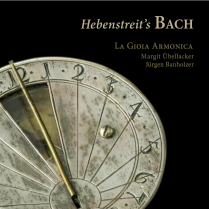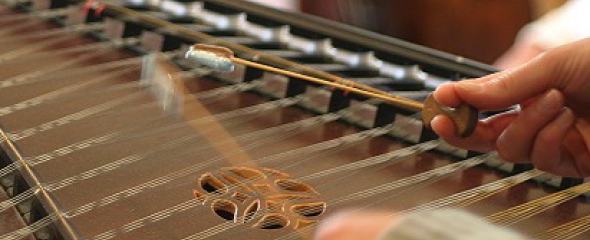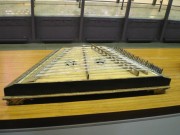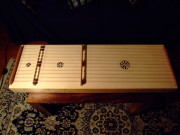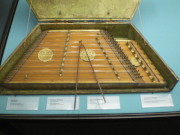As far back as the Middle Ages it was known under the name of dulcemelos – eng. “sweet song” or “sweet melody” - , of which the Czech theorist Paulus Paulirinus writes in his treatise „Liber viginti artium“ (1459-63), that he found its sound most pleasing amongst all other instruments.
In Germany the violinist Pantaleon Hebenstreit (1667-1750) considerably enlarged the size of the rustic type of the dulcimer and turned the diatonic instrument into a chromatic one. He achieved such skill on his perfected dulcimer that he was to become one of the most popular virtuosos of his time. In 1705 he performed at Versailles before Louis XIV (who supposedly named the instrument pantaleon, after its inventor). In 1708 he played for the Emperor in Vienna and in 1714 was appointed pantaleonist to the Hofkapelle of Dresden, the most famous European orchestra at the time. Hebenstreit had several pupils who achieved great fame. One of these was Maximilian Hellmann, for whom Caldara had composed in Vienna.
It is highly likely that the popularity of the pantaleon prepared the ground for the later triumphant progress of the pianoforte (Hammerclavier). Different string materials and the choice of hammers,
which could be covered with different materials, lent the pantaleon an overwhelming richness of tone-colours and the possibility of great dynamic differentiation. The considerable range, the
possibility of using two-voice strokes and arpeggios to describe the harmony, and the richness of sounds and colours raised the pantaleon to the rank of an instrument, „which from a miserable
dulcimer has become the most complete of instruments, even more perfect than the clavecin“ (Jacob von Stählin in Johann Adam Hiller, Musikalische Nachrichten und Anmerkungen, Leipzig 1770), „in as
much as it is the true forte piano, because our modern foertepiano is completely overshadowed by it“. (Johann Jacob Christoph Kachel, Kurtzer historischer Critischer Versuch über die Alte, Mittlere
und Neue Music, Basle 1792).
As reasons for the disappearance of the instrument in the second half of the 18th century, unresolved constructional problems, the unwiely size of the instrument, the tremendous difficulties of mastering the instrument are cited. Unfortunately no orginal of the pantaleon has survived, nor are there any concrete descriptions of its construction or reliable pictorial material of the legendary instrument. Moreover, its virtuosos of the day seem largley to have improvised or to have arranged works for other instruments.
Here then is ample opportunity for the marriage of musicological research and creative fantasy. At present the most suitable instrument for rendering the orignal repertoire for the pantaleon seems to be the Salzburg tenor dulcimer.
Margit Übellacker
